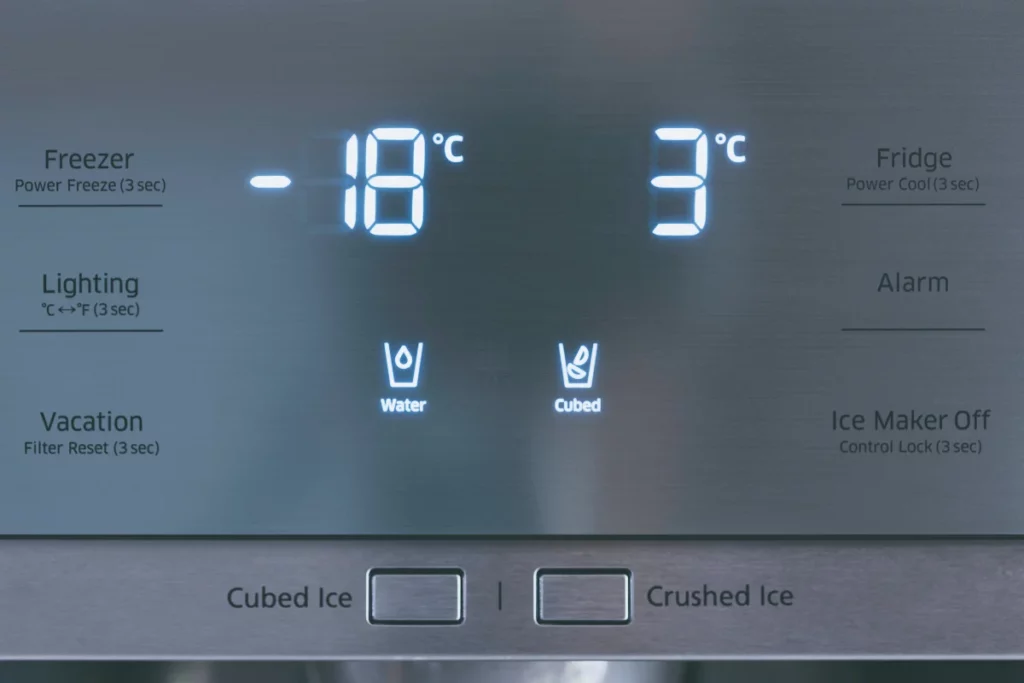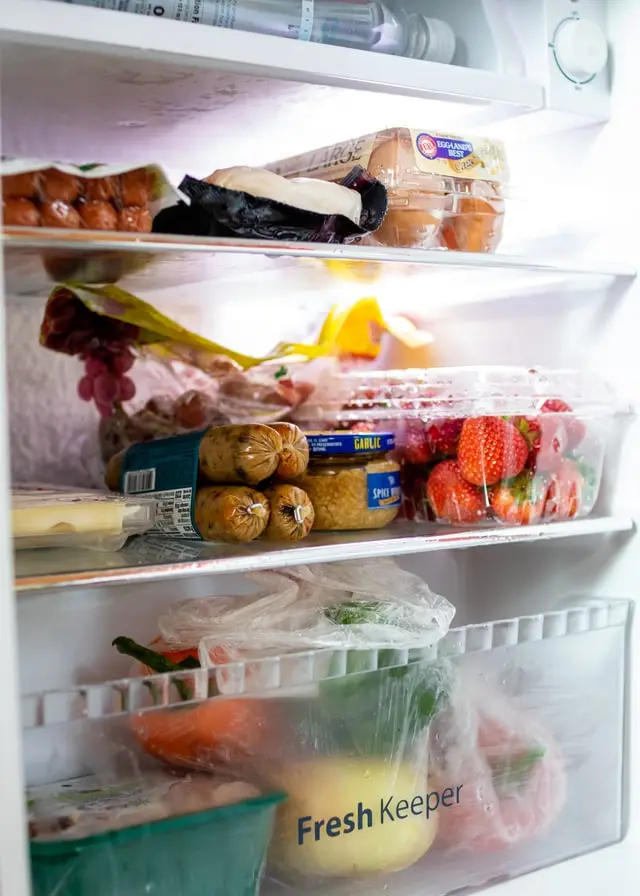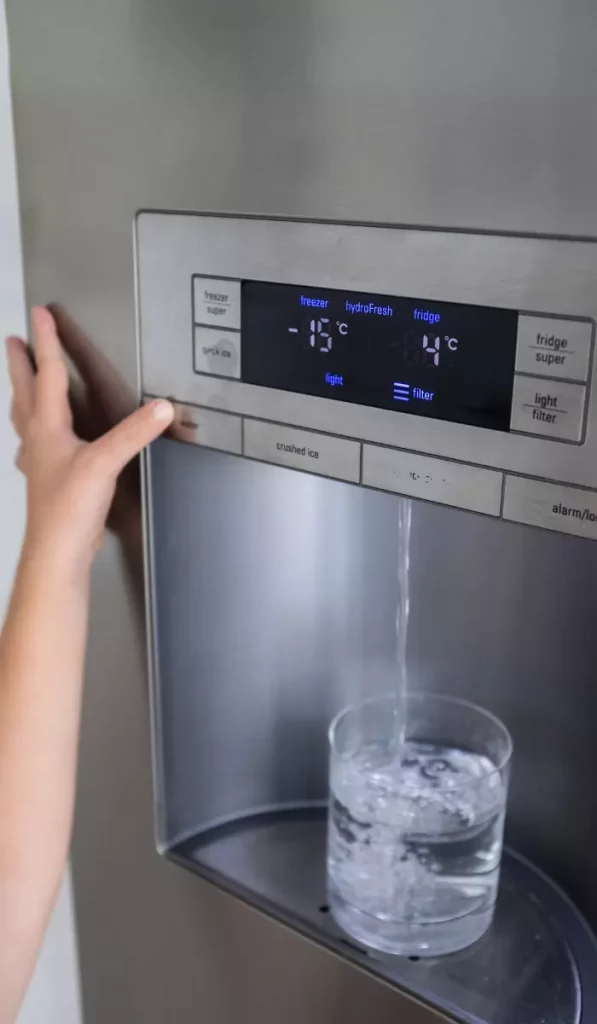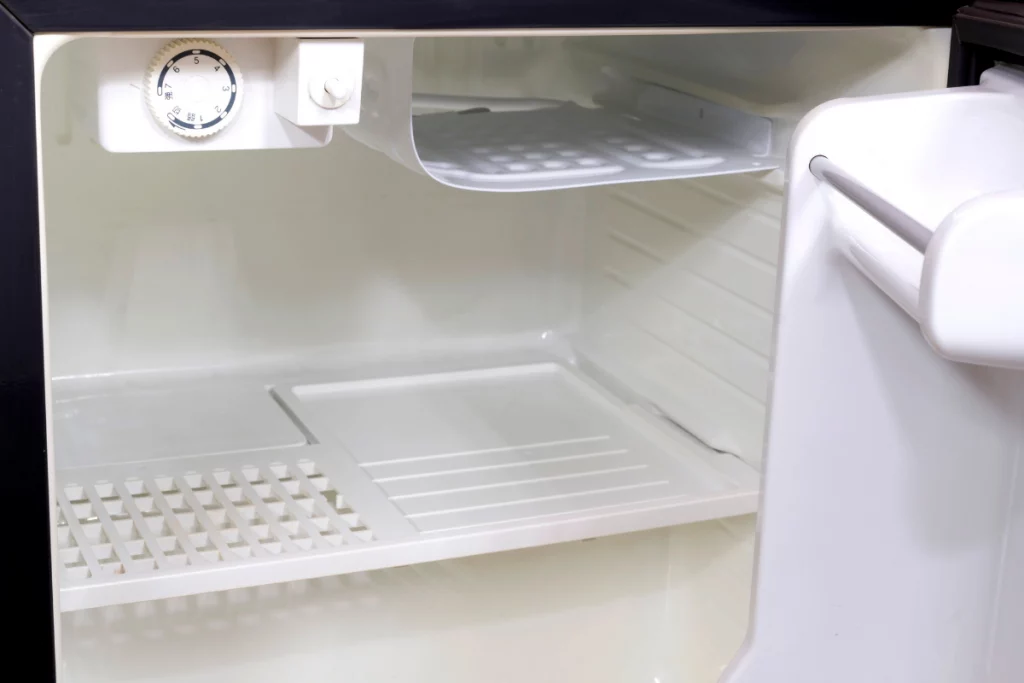Understanding the temperature settings of a refrigerator is essential for maintaining food safety and optimizing the efficiency of the appliance. While it might seem straightforward, the settings can sometimes cause confusion.
For instance, on a scale from 1 to 7, which number represents the coldest setting? This article aims to demystify the temperature controls of a fridge, helping you accurately set, measure, and maintain the ideal temperature. Let’s delve into the specifics.

Table of Contents
What is the coldest setting on a fridge 1-7?
When navigating the temperature settings of a fridge, especially one that uses a scale from 1 to 7, it’s essential to know which end of the scale is the coldest. This might seem straightforward, but I’ve encountered plenty of folks who were stumped by this!
Generally, on most fridges, the higher the number on the thermostat, the colder the temperature. So, in the case of a 1-7 scale, setting your fridge to 7 would make it the coldest. Think of it this way: the number corresponds to the cooling power of the fridge. A setting of 1 provides the least cooling power, while 7 offers the maximum.
However, there’s a small caveat. Not all fridges are made the same, and while the above holds true for many, always refer to your fridge’s user manual or manufacturer’s guidelines. Some older models or specific brands might differ.
In essence, if you’re aiming to keep your perishables super cold or need to lower the temperature rapidly, a setting closer to 7 is your go-to. But remember, colder isn’t always better! It’s crucial to strike a balance to ensure food safety and energy efficiency. But we’ll touch on that more later.
What is the coldest setting on a fridge 1-5?
Moving from a 1-7 scale, let’s dive into the slightly simpler world of the 1-5 fridge settings. For those with a fridge that uses this scale, understanding the coldest option is equally crucial.
Similar to the 1-7 setting, in most refrigerators with a 1-5 scale, the higher the number, the colder the setting. So, on this scale, 5 would typically be the coldest setting. Again, imagine it as a scale of cooling intensity, where 1 offers minimal cooling, and 5 cranks it up to the max.
But, and there always seems to be a “but” with these things, doesn’t there? It’s vital to mention that generalizations have their exceptions. Always keep your fridge’s manual or manufacturer’s details in a handy spot. A quick peek can save a lot of guesswork and prevent accidental freezing of items that prefer a more moderate chill.

How to measure your fridge temperature accurately
Alright, now that we’ve got a handle on the settings, let’s talk about how to accurately measure the temperature inside your fridge. Because, let’s be real, what’s the point of knowing the coldest setting if we can’t verify that it’s doing its job correctly?
- Invest in a Fridge Thermometer: The easiest and most straightforward method is using a dedicated fridge thermometer. These are designed to operate in cold environments and give accurate readings. Just place it in the center of the middle shelf and avoid the door, as that area tends to have fluctuating temperatures.
- Check Regularly: For the best results, after placing the thermometer, leave it undisturbed for at least 24 hours. This gives it ample time to adjust and provide a consistent reading. It’s a good habit to check this temperature regularly, especially after adjusting the thermostat.
- Optimal Temperature Range: Aim for a fridge temperature between 35° and 38°F (or 1.7 to 3.3°C). This range is cold enough to preserve food without freezing it.
- Note on Digital Fridges: Some modern fridges come with built-in digital temperature displays. These are super handy, but occasionally, they can be a touch off. Using a separate thermometer for a double-check now and then isn’t a bad idea.
How to adjust your fridge thermostat dial, slider, or digital display
Gotcha! So, you’re armed with the knowledge of the temperature your fridge is sitting at. Now, let’s walk through how to adjust that temperature if it’s not quite where you want it. Whether you have a classic dial, a slider, or a fancy digital display, I’ve got your back.
Dial Thermostat:
Locate the dial, usually inside the fridge, often at the top or on the side.
Turn it towards the higher numbers for colder temperatures and lower numbers for warmer ones. Make small adjustments. It’s better to move it one number at a time and then measure the temperature again before making further changes.
Slider Control:
Sliders can be a tad tricky. They usually have a scale, sometimes with the word “colder” on one end.
Move the slider towards the “colder” end to decrease the temperature or in the opposite direction if you need it a bit warmer. Like with dials, make small adjustments and wait a bit before making more changes.
Digital Display:
With a digital display, you’ll likely have buttons or a touchscreen interface. Locate the temperature control, which is often clearly labeled. Press the up or down buttons (or “+” and “-“) to adjust the temperature. Some fridges also have quick-set options for certain temperatures. Always wait a bit after adjusting, as the fridge takes time to reach the new setting.

A few extra pointers:
- Patience is Key: After making adjustments, give your fridge at least 24 hours before checking the temperature again. Fridges need time to stabilize, and frequent changes can strain the appliance.
- Avoid Overfilling: Believe it or not, how much you have in your fridge can affect its temperature. A too-empty fridge can struggle to maintain cold temperatures, while an overstuffed one can restrict airflow. Try to strike a balance.
- Seek Guidance: If in doubt, refer to your fridge’s manual. It often has specific instructions for temperature adjustments tailored to your model.
Adjusting your fridge might feel a bit like an art form, but with a bit of patience and attention to detail, you’ll master it in no time. Cheers to perfectly chilled snacks and drinks!

How to keep your fridge cold and efficient
Maintaining a cold and efficient refrigerator is not only great for your food but also for your energy bill. Let’s discuss some straightforward strategies to keep that fridge running at its best without any dramatic flair.
- Regular Cleaning: Dust and grime can accumulate on the condenser coils at the back or underneath your fridge. A dirty coil can reduce the fridge’s efficiency. Gently clean the coils using a coil brush or vacuum every few months.
- Check the Seals: The rubber seals, or gaskets, on the fridge doors ensure cold air stays in. Over time, they can weaken or get dirty. Clean them with warm, soapy water and check for cracks or gaps. A weak seal can be a significant energy drainer.
- Organize Your Fridge: A well-organized fridge promotes better airflow. Use bins or containers to group similar items, avoid stacking things too closely, and ensure vents aren’t blocked.
- Cool Foods Before Storing: Putting hot leftovers directly into the fridge can raise the internal temperature, making the appliance work harder. Let your food cool to room temperature (but not too long for safety reasons) before storing it.
- Minimize Door Openings: Every time you open the fridge door, you let out cold air. Keep your trips to the fridge deliberate and quick. If you’re cooking, consider taking out everything you need at once.
- Maintain Adequate Space: Ensure there’s some space between the fridge’s back and the wall. This improves ventilation, helping the coils dissipate heat more effectively.
- Monitor Fridge Load: While an empty fridge isn’t efficient, an overloaded one isn’t either. As mentioned before, find a middle ground. If you find your fridge often empty, consider storing jugs of water in it. They’ll retain cold and help maintain a steady temperature.
- Regular Temperature Checks: With the knowledge you now have about measuring fridge temperatures, make it a habit. Periodic checks can alert you to any efficiency issues before they become significant problems.
Maintaining an efficient fridge isn’t rocket science; it’s more about forming good habits and giving it a little care now and then.
Conclusion
Having a proper understanding of fridge temperatures and settings might seem minor, but it plays a big role in keeping food fresh and reducing energy costs. We hope this article certainly helped you in that regard.



